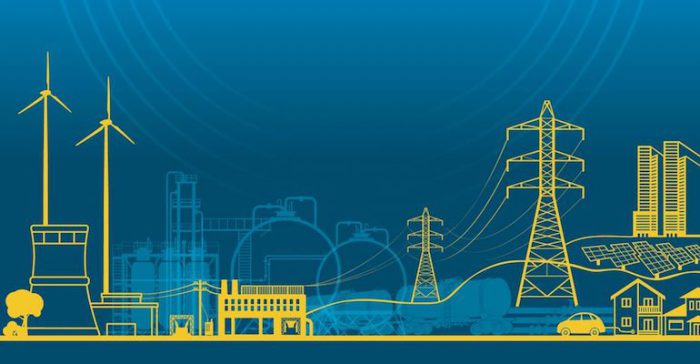Ryan Pollin, ERS, for Zondits
In late February, ISO-New England’s Gordon van Welie gave the 2018 State of the Grid presentation. The presentation slides detail New England’s generation mix and the various electricity markets. van Welie’s discussion on reliability and the health of the grid is a great lay of the land for understanding where New England was and where we are headed.
In the long view, the New England electricity grid is in a good place. The price of electricity is low (compared to the past, not other regions), congestion and reliability costs remain a fraction of what they used to be, and carbon-intense resources coal and oil contribute just 3% of the region’s energy, down from 40% in 2000. More retirements of coal, oil, and nuclear power are expected (a remarkable total of 16% of current capacity), and new capacity is stepping in to fill the need in the form of wind (58% of proposed capacity); natural gas (31% of proposed capacity); and solar, energy efficiency, and battery storage (together 11% of proposed capacity). In van Welie’s words, this is “a race to replace” the retiring capacity; if the speed of plant retirements outpaces the speed of incoming resources, the risk of unreliability increases because the grid will be undersized until the new resources become available.

The Forward Capacity Market (FCM) is burgeoning into a larger share of energy market value, and the biggest force is energy efficiency. From 2012–2016, the FCM totaled 1.0–1.2 billion dollars in whole electricity. In 2017 that number is expected to finalize at 2.2 billion dollars – a huge increase. This slide shows the breakdown of what is participating in these forward capacity auctions.

The gross peak and gross load forecasts continue to climb upwards, but after accounting for behind-the-meter solar and energy efficiency, peak demand is projected to flatline and total energy is projected to fall. While these forecasts look great, they are incomplete and therefore shouldn’t be completely trusted. Decarbonization of transportation and heating is not included in that load forecast slide, and van Welie half-admits to that on the next slide: “The ISO plans to start working this year with regional stakeholders to quantify the impact of the states’ decarbonization policies [of transportation and heating] on long-term demand. While we don’t know exactly how fast electric vehicle loads are going to ramp up, they will surely be a significant trend of the coming decade, so to give this forecast without a clearer asterisk feels a little unfair.”

The next portion of the presentation revisits the natural gas shortage from the winter of 2016–2017 and lays out the ISO-NE’s recent findings on a forward-looking fuel security analysis. During that cold spell, the local marginal price for electricity spiked from around $40/MWh to $287/MWh due to a shortage in natural gas available for producing electricity. (Residential and space heating end uses are prioritized because they have no backup.) In those two weeks, New England generators burned more than twice the amount of oil than all oil burned in 2016 for electricity.
Several scenarios were exercised to determine the vulnerability of the grid to outages caused by fuel shortages, capacity losses, and other factors. There were no shocking conclusions: 1) yes, there are scenarios that could get us into trouble; 2) increased renewables and gas all lessen the risks, especially if they outpace the retirement of coal, oil, and nuclear plants.
The presentation closes with a focus on the future, including a new proposal, “Competitive Auctions for Sponsored Policy Resources (CASPR),” recently submitted to FERC. The intent of CASPR is to ensure that resources not demanded by state policies (such as new gas plants) are not out-competed by wind and other emissions-reducing resources, as there will likely be a need for some resources that are not necessarily also popular with state legislators and voters.
van Welie also outlined three significant improvements to the various electricity markets on the horizon. Starting in 2018, pay-for-performance initiatives will be allowed into the FCM, demand response resources will be participating in daily energy dispatch (not just the capacity market), and advanced energy storage technologies will be allowed to act as dispatchable resources in the energy market.
There are a few things that I believe they could have more fully covered in the presentation:
- The illustration of the carbon intensity of the grid is weak. The bonus slide shows that the average emissions rate is 30% lower in 2016 than it was in 1999, but we don’t have any understanding of when and how that happened. What will the emissions rate do under the projected load and resource capacity forecasts? I am happy to see the declining role of coal and oil for producing energy and would like to see the emissions effects of the growth of natural gas on the grid (48% of capacity and climbing). Since the ISO-NE doesn’t have any decarbonization goals of its own, it’s not a big surprise this wasn’t front and center. But given the policy goals of various New England states, I expected them to show the bean-counting for kTCO2e in a little more detail.
- New elective transmission upgrades are bringing in additional capacity of zero-carbon electricity, including Hydro-Quebec and other Canadian hydroelectric resources. Massachusetts requires over 1 GW of additional clean energy capacity by 2022, and the expectation was that nearly all of it would come from Hydro-Quebec – until a surprise permit denial in New Hampshire this month threw a wrench in the plans.
The full State of the Grid presentation and comments are available from ISO-NE on their website.
https://www.iso-ne.com/about/news-media/press-releases/state-of-the-grid-2018

